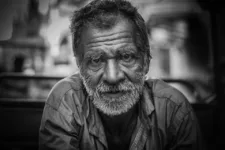Flatter your portrait person with the perfect background, even if you have no professional backgrounds or light sources. A little background on exposure and composition can bring you very close to a beautiful portrait background.
This guide is full of helpful ideas for photographers of all kinds. I had the idea that if you have mastered all the techniques, you have a lot of tricks in store for your recordings. Taking high school senior portraits can be challenging, especially when you need to please both the kids and the parents. Use a tip or combine several and you can quickly apply them to all sorts of lighting situations or models and make a wonderful portrait. Many techniques are best suited for one or two people. The bigger a group becomes, the fewer options you will have. That’s life for portrait photographers!
1. Avoid distractions
Have you ever looked around and were not particularly excited about your model’s environment? Maybe it was a messy apartment or a nondescript backyard. A place may seem boring at first, but you can improve that by thinking about what your camera “sees”. Look through the viewfinder and watch what you see in the background. Keep the camera down or up. Go close or to the side. Pay attention to the effect of your movements in the viewfinder.
One of the most important things you can do to avoid distractions in the background is to get closer to your model. So you capture the picture already during the recording with the camera.
In the two pictures below you can see how the photo has changed when I close up and you no longer see the mother. All sorts of distractions were removed and the focus of the picture was entirely on the baby. It is also important what became of the mother’s dark purple sweater, which comes very close to a professional background.
Light: Indirect light through the window. A north-facing window, but important is not the direction, but that the sun did not shine directly into it.
Lens: 85mm focal length with an aperture of f / 1.8. The shutter speed is not really important. This just has to be fast enough that the picture does not blur.
2. Look down or up
If you stand above your model and look down, you will find a decent – or even great – background in almost every situation. In any case, you avoid high-voltage power lines, street signs or similar distractions. I’m not tall, so that sometimes means my model needs to kneel, kneel, crawl, or whatever. Or I have to climb trees or stand on walls, chairs, park benches etc. You make a picture of a child or baby? Perfect! Another idea is to look up and use leaves or the sky as background.
This is not a hint for the background, but if you want to make someone slimmer and look down on them, then let them stretch their chin a bit, that can be very effective.
3. Bokeh, baby!
This step is critical, but your options vary depending on the lens you are using and its characteristics: aperture and focal length. The bokeh increases with the focal length and the size of the aperture. But no matter which lens you use, in any case, the bokeh gets stronger when you get close to your model and at the same time place it far from the background. Open the aperture and shoot with the largest aperture you can use. If you have only one model, you can work with a f / 1.8 or f / 2 aperture. When the environment blurs as much as possible, you can turn everything, the floor, a wall, all around your model, into a great background.
4. Trick on the exposure
I remember how ecstatic I was when I found out that you can make a background completely dark or bright when you stage the exposure properly. What a cool trick! If you use bright skies or dark shadows, you can be anywhere and nobody knows you did not use a professional background. For this trick, you could write a manual or an entire book, but I’ll keep it simple: your camera can only record a limited amount of light. Compare this with the amount of light in the background. If there is a big difference, no matter if much more or less, then your camera will capture that is completely black or white.
If the background is shady, then not enough light is reflected into the camera and the film will not record. If your background is much brighter than your model, even in blue skies, so much light will hit your film at these spots that the area will turn white. I must say at this point that this white background is something else called “breaking lights.” This is a mistake caused by overexposure and the loss of details in the lights, because in these places simply nothing is recorded. Of course you want the movie to pick up white spots and nothing if that makes sense.
Just remember to measure your model’s light during exposure metering, not the background, and everything is fine!
5. Make the most of the available backgrounds
You can probably see how this trick builds on the previous one. If you do not have the big difference between the brightness of the model and the background you need for step 4, then you can use available materials to get a light or dark background. These either absorb light, so it does not fall into your camera, or reflect it. Again, we rely on the fact that the camera takes only a limited range of light and you can still get the same effect as in step 4.
Create a background by asking your customers if they have a light sheet or a dark velvet dress (velvet is perfect because it absorbs more light than other fabric). Even a simple black or light T-shirt can already provide such an effect.
6. Distance from the model to the background
It is often a good idea to increase the distance between the model and the background. The benefits are stronger bokeh (see step 3) and the higher likelihood that the background will be bright or dark [greater contrast between brightness of the model and background (see tips 4 and 5)]. In addition, your image gains in depth, which makes the composition more interesting.
7. Light and shadow
Bright spots of light or diffused light can be a great background. Light spots can be restless if they fall on your model’s face or body if you do not consciously use them. But if you think about it outside on a sunny day, use the light that falls through the leaves and use it as a background.
8. Lens Flare
When I was at the photography school, I was taught that lens flares are the result of poor composition, and I’m sure there are people who still hate to spot flare on photos. However, for wedding and engagement photos, you often use lunettes to make something interesting, which might otherwise be a boring background or to hide a distraction in the background. The best thing is that cheaper lenses are more suitable for this purpose than expensive ones that do not allow such glare stains to come about.
9. Highlight your model’s eye color
Last but not least, find colors that flatter your model, usually emphasizing their eyes. Tree bark in the background or just earth or sand can make a person with brown eyes look much livelier. Green leaves or blurred plants or a blue sky can accentuate blue or green eyes properly.








